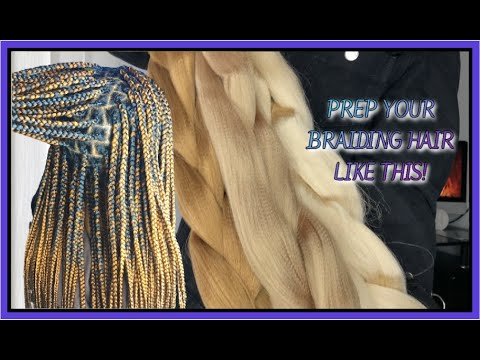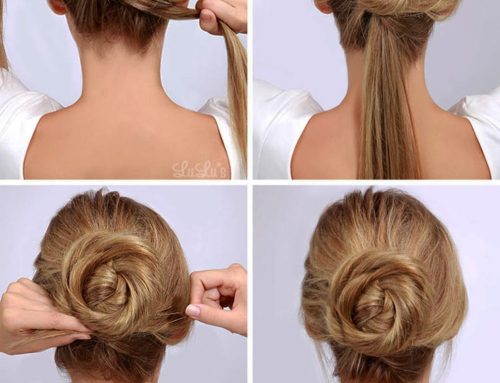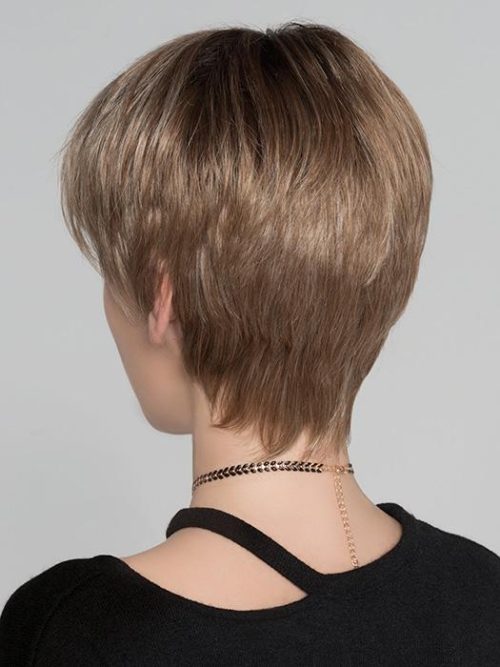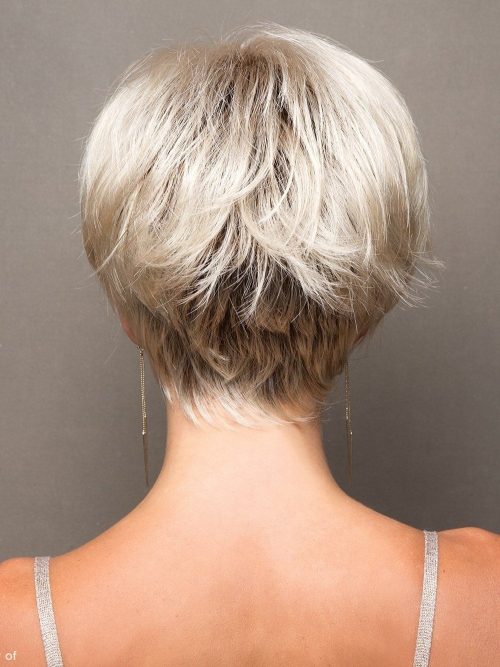How to Prep Your Hair for Braiding: The Ultimate Guide to Healthy, Long-Lasting Braids
Hey there, braid lovers! Whether you’re getting ready for a fresh set of box braids, cornrows, or a simple three-strand style, prepping your hair the right way can make all the difference. You want braids that look amazing, feel comfy, and keep your hair healthy underneath—right? Well, you’re in the right place! This isn’t just another basic “wash and go” guide. We’re diving deep into the secrets that hairstylists don’t always spill, the stuff fans are dying to know, and some surprising tips that’ll have your braids popping for weeks. Let’s get started!
Why Prepping Your Hair for Braiding Matters
Prepping your hair isn’t just about making it look good—it’s about protecting it. When you braid your hair, it’s tucked away for days or even weeks, so whatever condition it’s in before braiding is what you’re stuck with. Think of it like packing for a trip: if you forget the essentials, you’re going to feel it later. A solid prep routine strengthens your strands, keeps your scalp happy, and helps your braids last longer without breakage or itchiness.
Here’s the kicker: a lot of people skip this step or rush through it, and then wonder why their scalp’s flaky or their ends are splitting. We’re not doing that today! I’ve got some insider tricks up my sleeve—stuff I’ve learned from late-night braid sessions with my cousins, chats with hairstylists, and even a little digging into what science says about hair care. Ready to level up your braid game? Let’s go!
Step 1: Start with a Clean Slate—Wash Your Hair Right
The Core Idea
You wouldn’t cook in a dirty pan, so don’t braid on a dirty scalp. Washing your hair removes buildup, sweat, and oils that can turn into a flaky, itchy mess under braids.
Why It’s a Big Deal
Your scalp’s like the soil for a plant—if it’s clogged or unhealthy, your hair won’t thrive. Leftover product or dirt can also make braids slip out faster. Plus, who wants to sit there scratching their head a week into a fresh style? Not cute.
What the Pros Say
Licensed cosmetologist Niani B., owner of Beauté Anthologie, once told me, “A clean scalp is non-negotiable. It’s the foundation for everything else you do.” She’s right—starting fresh sets you up for success.
How to Do It
Here’s a step-by-step guide to washing your hair like a pro before braiding:
- Pick the Right Shampoo
- ✔️ Use a clarifying shampoo to blast away buildup. Look for ones with words like “deep clean” or “detox” on the label.
- ❌ Skip creamy, heavy shampoos—they can leave residue behind.
- Try this: Mix a teaspoon of baking soda into your regular shampoo for an extra cleanse (but don’t do this too often—it can dry you out!).
- Section Your Hair
- Divide your hair into 4-6 sections with clips. This makes it easier to clean every inch.
- Pro tip: Use a shower comb to gently detangle as you go.
- Scrub That Scalp
- Massage the shampoo in with your fingertips (not nails!) for 2-3 minutes. Focus on your roots—those braids are going to sit tight there.
- Rinse until the water runs clear. No suds = no leftover gunk.
- Double Up if Needed
- If you’ve got a lot of product buildup (think gels or heavy oils), wash twice. The first round breaks it down, the second finishes the job.
Fun Fact
Did you know your scalp sheds about 30,000 dead skin cells a day? That’s why a good wash feels so refreshing—it’s like giving your head a mini reset!
Step 2: Deep Condition Like Your Hair Depends on It
The Core Idea
Braids can stress your hair, so deep conditioning locks in moisture and strength before you tuck it away.
The Secret No One Talks About
Here’s something hairstylists don’t always mention: the conditioner you use before braiding is your last big chance to feed your hair. Once it’s braided, you can’t slap on a mask without loosening the style. So, make it count!
Science Says
A 2019 study from the Journal of Cosmetic Science found that deep conditioning with protein-rich products can reduce hair breakage by up to 20%. That’s huge when you’re pulling your hair into tight braids.
How to Do It
Let’s break this down into an easy routine:
- Choose a Heavy Hitter
- ✔️ Go for a deep conditioner with ingredients like shea butter, keratin, or honey. These hydrate and reinforce your strands.
- ❌ Avoid lightweight rinse-out conditioners—they won’t cut it for this job.
- Fan fave: SheaMoisture Manuka Honey & Mafura Oil Hair Masque—it’s thick, rich, and smells like a tropical vacation.
- Apply Generously
- Work it through from roots to ends. Don’t skimp—your ends are the oldest part of your hair and need the most love.
- Twist or clip your hair into sections to keep it coated evenly.
- Add Heat (Yes, Really!)
- Pop on a shower cap and sit under a hooded dryer for 15-20 minutes. No dryer? Wrap a warm towel around your head. Heat opens your hair cuticles so the good stuff sinks in.
- Hack: Blast your towel with a hairdryer for 30 seconds to warm it up.
- Rinse Smart
- Rinse with cool water to seal the cuticles. Leave a tiny bit of conditioner in (like 5%) for extra slip and softness.
My Little Secret
I’m obsessed with adding a teaspoon of coconut oil to my deep conditioner. It’s not just for cooking—it makes my hair so shiny, my friends always ask what I’m using. Shh, don’t tell!
Step 3: Detangle with Patience (and a Plan)
The Core Idea
Tangled hair = painful braiding and breakage. Detangling is your ticket to smooth, neat braids.
Why It’s Sneaky Important
Knots don’t just hurt—they can snap your hair when you braid over them. Plus, detangled hair is easier for your stylist (or you!) to work with, saving time and tears.
How to Do It
Here’s the foolproof way to detangle without losing half your hair:
- Start Wet or Damp
- ✔️ Detangle after conditioning while your hair’s still wet—it’s more flexible and less likely to break.
- ❌ Don’t yank through dry hair; it’s a recipe for split ends.
- Use the Right Tools
- Wide-tooth comb: Your BFF for gentle detangling.
- Fingers: Perfect for feeling out stubborn knots.
- Try this: Spritz a mix of water and leave-in conditioner (like 80/20) to keep things slippery.
- Work in Sections
- Split your hair into 4-8 parts. Start at the ends and move up to the roots—reverse order snags less.
- Clip away the sections you’re not working on.
- Be Gentle
- If you hit a knot, hold the hair above it with one hand and tease it apart with the other. No ripping allowed!
Confession Time
I used to hate detangling because it took forever—until I started listening to true crime podcasts while I did it. Now it’s my chill time, and my hair’s never been happier!
Step 4: Stretch Your Hair for Neater Braids
The Core Idea
Stretching your hair makes it easier to braid and gives your style a sleeker finish.
The Hidden Perk
Stretched hair doesn’t shrink as much under braids, so your style stays uniform. Ever seen braids that look tight at the top and puffy at the bottom? That’s shrinkage at work.
How to Do It
You’ve got options—pick what vibes with you:
- Blow Dry Method
- Apply a heat protectant (like CHI Keratin Silk Infusion).
- Use a low or medium heat setting on your blow dryer.
- Stretch small sections with a round brush as you dry.
- ✔️ Keeps hair smooth and straight.
- ❌ Don’t overdo the heat—once is enough.
- Banding Method
- Section damp hair into 4-6 parts.
- Wrap small hair ties or rubber bands down each section, like a ponytail stack.
- Leave it overnight and remove in the morning.
- ✔️ No heat, super gentle.
- ❌ Takes longer but worth it for heat-free fans.
- Big Twists or Cornrows
- Twist or braid damp hair into 6-10 chunky sections.
- Let it air dry fully (sleep on it if you can).
- Undo and braid as usual.
- My go-to: I do this while binge-watching Netflix—two birds, one stone!
Quick Tip
If your hair’s super curly (like 4C), stretching is a game-changer. It cuts braiding time in half and makes parting way easier.
Step 5: Treat Your Scalp to Some TLC
The Core Idea
A healthy scalp means healthy hair—and braids put extra tension on it, so prep it well.
What Nobody Tells You
Your scalp can get dry or irritated under braids if you skip this step. Ever had that “tight head” feeling a few days in? That’s your scalp crying for help.
Science Says
A 2021 study in the International Journal of Trichology showed that scalp massages with oil can boost circulation and reduce flakiness. Better blood flow = stronger roots.
How to Do It
Here’s your scalp prep checklist:
- Massage with Oil
- Use a lightweight oil like jojoba or grapeseed (heavy oils like castor can clog pores).
- Rub it in with your fingertips for 5 minutes—feels amazing and wakes up your scalp.
- Exfoliate if Needed
- Got flakes? Mix a tablespoon of brown sugar with your shampoo for a gentle scrub.
- Rinse well—no gritty scalp under braids, please!
- Moisturize
- Apply a lightweight leave-in or scalp cream (like Mielle Rosemary Mint Oil).
- Hack: Dab it on with a cotton pad for even coverage.
My Obsession
I’m low-key addicted to scalp massages. I’ll sit there with my oil and a playlist, pretending I’m at a spa. It’s my little escape—and my scalp thanks me!
Step 6: Trim Those Ends (Just a Little!)
The Core Idea
Healthy ends make your braids look polished and prevent splitting while they’re tucked away.
Why It’s Worth It
Split ends don’t magically heal under braids—they get worse. A quick trim now saves you a big chop later.
How to Do It
- DIY Trim
- Section dry, stretched hair.
- Snip off ¼ inch from the tips with sharp hair scissors (not kitchen ones!).
- Check for evenness in a mirror.
- ✔️ Keeps things neat.
- ❌ Don’t over-trim—less is more.
- Pro Trim
- Hit up your stylist for a dusting (that’s a super-light trim). Tell them you’re prepping for braids—they’ll get it.
Real Talk
I used to skip trims because I was scared of losing length. Then I learned split ends travel up the strand—yikes! Now I’m a trimming convert.
Step 7: Moisturize One Last Time Before Braiding
The Core Idea
Lock in hydration so your hair doesn’t dry out under braids.
The Catch
Too much product can make braids slippery or attract dirt. It’s all about balance.
How to Do It
- Leave-In Love
- Spritz a lightweight leave-in conditioner (like As I Am Double Rich) over your hair.
- Comb it through with your fingers—no heavy buildup here.
- ✔️ Adds slip without grease.
- ❌ Skip oils on the scalp—save that for after braiding.
- Seal the Deal
- Dab a pea-sized amount of cream or butter (like Cantu Shea Butter) on your ends only.
- Why ends? They’re the driest part and need extra protection.
Insider Tip
I keep a mini spray bottle of water and leave-in mix in my bag. If my braids feel dry later, a quick spritz saves the day!
Bonus Tips: Stuff You Won’t Find Everywhere
Pre-Braid Scalp Soother
Mix aloe vera gel with a drop of tea tree oil and massage it in. It calms irritation and fights bacteria—perfect if you’re prone to itchiness.
Braid Size Matters
Planning tiny braids? Prep with extra moisture—they pull harder on your hair. Bigger braids? You can ease up a bit.
Wait Between Styles
Just took out braids? Trichologist Bridgette Hill says, “Give your scalp a month off before re-braiding. It needs to breathe!” Trust her—your hair will grow stronger.
Synthetic Hair Check
Using extensions? Look for “pre-stretched” ones—they’re easier to braid and less likely to tangle. Bonus: Check labels for flame retardants—some states ban them for health reasons.
Common Mistakes to Avoid
| Mistake | Why It’s Bad | Fix It |
|---|---|---|
| Braiding dirty hair | Leads to itchiness and slippage | Always wash first |
| Skipping conditioner | Dry, brittle hair under braids | Deep condition every time |
| Using too much oil | Greasy buildup and loose braids | Stick to leave-in instead |
| Not detangling fully | Painful braiding and breakage | Take your time with a comb |
| Ignoring split ends | Damage spreads up the strand | Trim before braiding |
FAQ: Your Burning Questions Answered
Q: How long should I prep my hair before braiding?
A: Give yourself 2-3 hours if you’re doing it all in one go. Spread it over a day if you’re chilling—wash in the morning, condition at night, etc.
Q: Can I braid wet hair?
A: Not really—wet hair stretches and shrinks as it dries, messing up your braid tension. Dry or damp is best.
Q: What if my scalp gets itchy after braiding?
A: You might’ve skipped the scalp prep. Next time, try the aloe trick or a clarifying wash.
Q: How often should I re-braid?
A: Every 6-8 weeks is ideal. Longer than that, and you risk matting or breakage.
Let’s Talk Maintenance (Quick Sneak Peek)
Prepping doesn’t stop once the braids are in! To keep them fresh:
- Sleep with a satin scarf or bonnet (no cotton—it sucks out moisture).
- Spritz your scalp with a water-and-oil mix every few days.
- Wash your braids every 2-3 weeks with diluted shampoo—focus on the scalp, not the lengths.
My Braid Journey (A Little Story)
I’ve been braiding my hair since I was 12—started with wonky little plaits my mom would redo because they’d unravel by lunchtime. Now? I’m the go-to braid girl in my crew. My secret? Prepping like it’s a ritual. I’ll blast some Beyoncé, light a candle, and treat my hair like royalty. It’s not just about the style—it’s my me-time. What’s your braid story? I’d love to hear it!
The Wrap-Up: Your Hair, Your Rules
Prepping your hair for braiding isn’t rocket science, but it’s not a slapdash job either. Wash it, condition it, detangle it, stretch it, pamper your scalp, trim it, and moisturize it. Do that, and your braids will thank you with weeks of flawless vibes. You’re not just prepping hair—you’re setting yourself up to feel confident and fierce.
Let’s Get Interactive!
- What’s your fave braid style? Drop it in the comments—I’m a sucker for knotless braids!
- Got a prep tip I missed? Share it—I’m always learning.
- Struggling with something? Ask away, and I’ll help you troubleshoot.
Happy braiding, fam! Let’s keep those strands strong and those styles slaying. What’s next on your hair adventure?





